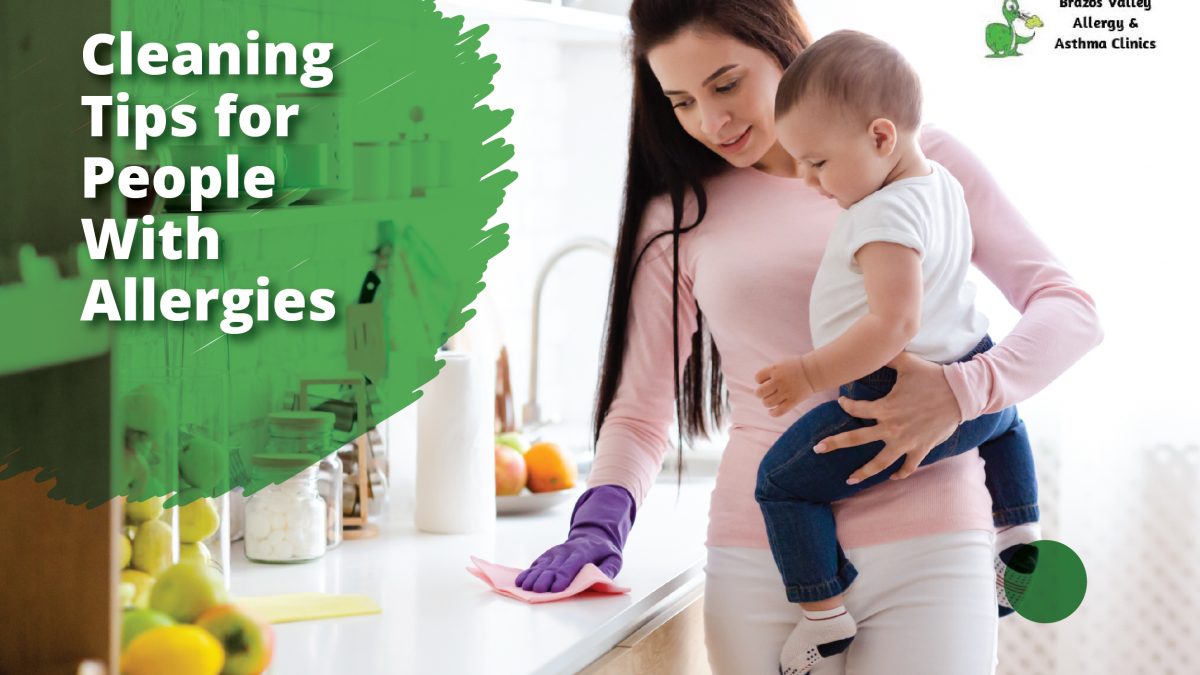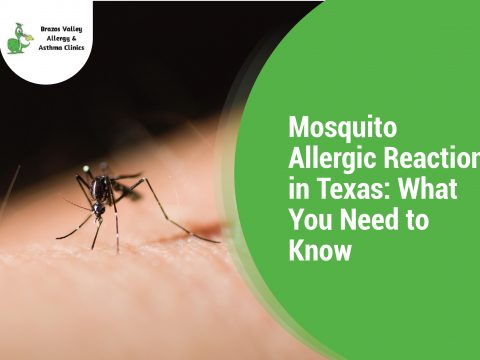- 979-485-9287
- office@bvallergy.com
-
 979-251-7804
979-251-7804
Cleaning Tips for People With Allergies

How to Allergy-Proof Your Home
October 28, 2021
Skin Allergies and How to Treat Them
November 12, 2021Managing your allergies requires keeping your home clean. However, it’s not as simple as sweeping a few pieces of furniture with a feather duster. If you live alone with allergies, many household cleaning tasks are even more challenging. You should apply different cleaning strategies to prevent irritants like mold and pet dander from triggering your symptoms.
To reduce allergens in the house, we offer these easy household cleaning tips for people with allergies:
-
Vacuum Your Home Regularly
Vacuuming is much better than dusting. You can reduce allergens lurking in your carpets and under your bed by vacuuming once or twice a week. Make sure you use a vacuum that has a HEPA filter. So you can rest assured you’re sucking up allergic triggers instead of just shooting them back out.
-
Wear Protective Equipment
Wear a face mask and goggles to protect your eyes and mouth from dust and other debris when cleaning the house. Choose a mask made from a lightweight, breathable material like cotton, cloth, or linen.
-
Keep Your Bedding and Laundry Clean, Too.
While cleaning for allergies is easier on shelves and furniture, don’t forget about your bedding and laundry. Don’t just change your bedding regularly. Wash it in hot water to get rid of indoor allergens.
-
Ensure That the Bathroom Is Mold-Free.
Avoid letting moisture build up in the bathroom. Do not place carpets in bathrooms. It accumulates mold, mildew, and other uncertain types of allergens. Instead, you can use washable throw rugs and bath mats. Wash them every week in hot water. Make sure you scrub the tiles, as well. Don’t forget to wash your shower curtains, too!
-
Avoid Air-Drying Laundry.
If you have severe pollen allergy symptoms, don’t consider air-drying. Clothes left outdoors tend to pick up pollen and mold. Furthermore, your clothes will pick up anything floating in the air. A clothes dryer is more suitable.
-
Filter Air Conditioners (AC)
Keep air vents clean by vacuuming regularly; deep cleaning them every other month to eliminate allergens. Wipe the air vents twice a week or more often if you use the AC every day. To filter the air in your house, change air filters regularly.
-
Ensure Any Necessary Repairs
Replace any broken or cracked grout to prevent moisture from leaking into your walls or subfloor. Remove all damaged caulk and replace it – it takes less than an hour.
-
Clean Dust With a Microfiber Cloth
Allergy sufferers should use a microfiber cloth when dusting. It’s a much better dusting method (and safer) than using chemical sprays. Dusters like brooms can spread allergens in your house, causing allergies or asthma attacks. With a microfiber cloth, you can rinse it after cleaning dust. You can also use them if it’s wet, so they are ideal for everyday cleaning!
-
Maintain a Clean Kitchen
The American Academy of Allergy Asthma & Immunology (AAAAI) advises these cleaning tips for allergies:
- Empty the trash daily and store garbage in an insect-proof container.
- Seal food in storage containers, including pet food. Remove moldy or expired products.
- Remove cooking fumes from your kitchen with an exhaust fan. It also reduces the building up of moisture in some areas.
- Do a thorough cleaning of cabinets and countertops, and check for plumbing leaks.
- Clean all cupboard exteriors with a scrub and stove-hood filters.
- Make sure drip pans are empty and clean. Change moldy rubber seals around doors.
- Keep the refrigerator dry to prevent mold growth.
- Clean the inside of the refrigerator and the utensil drawers.
-
Choose Cleaning Products With Care
Cleaning products can also trigger allergies. Most of them contain harsh chemicals that can exacerbate allergy and asthma symptoms. It is best to use non-toxic and fragrance-free cleaning products. So, better use eco-friendly allergy cleaners without harming the environment or yourself. These include :
- Vinegar
- Lemon juice or olive oil with vegetable oil
- Adding cinnamon, cloves, or steeped tea is better for air freshener
- Baking soda
- Natural soaps.
-
Don’t Let Dust Mites Live on Your Bed.
Dust mites thrive in warm, moist places like pillows and mattresses. In these areas, they breed and live off discarded scraps of human skin. People with dust mite allergies react to their bodies and wastes that trigger allergic reactions. Avoid these from happening by:
- Use allergen-proof pillow cases and mattresses
- Vacuum your mattress twice a year.
- Manage the humidity in your home to reduce dust mite habitat. Keep it below 50%.
-
Declutter Your Home.
Now is a great time to clear off your desk or reduce some clutter around your house. As clutter piles up, dust mites and cockroaches thrive.
How to get rid of allergies?
Allergies are not curable. However, over-the-counter drugs OTC or medications may provide relief. You can prevent allergic reactions by avoiding allergy triggers or limiting contact with them. Immunotherapy may also be a better choice since it reduces the severity of allergic reactions. A physician may recommend it if:
- The medication can’t alleviate allergy symptoms.
- Allergens are impossible to avoid
- Patients dislike taking medications.
- Other medications can interact with allergy medicines
Several years of immunotherapy can reduce allergic reactions to allergens in some people. For others, ongoing immunotherapy may be necessary.
BVALLERGY Can Help
These cleaning tips for allergy sufferers help relieve allergy symptoms. Making your home clean is one of the best ways to help you manage your allergies. If your allergies become worse even after cleaning, contact us today.
Paul Jantzi has spent more than 13 years serving the south-central Texas region as an allergist. He is board-certified in allergy and immunology with prior specialty training in pediatrics and internal medicine. Schedule a meeting with him to learn more about immunotherapy and how it can help with your allergy symptoms.




